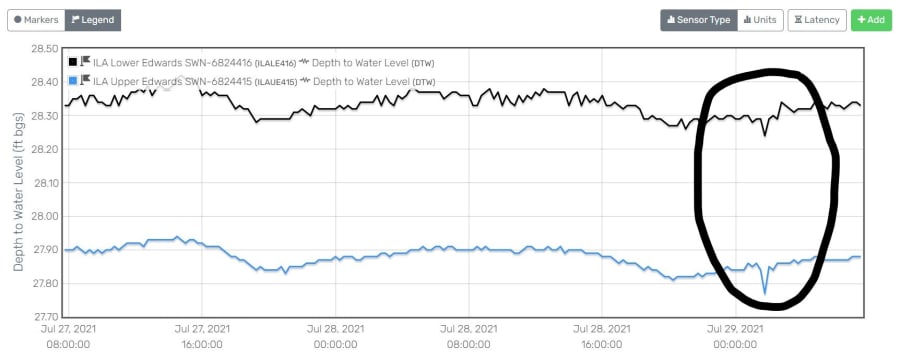One of the strongest earthquakes in more than 50 years struck off the coast of Alaska this morning, and it may have produced a response within the Edwards Aquifer in San Antonio.
That response would NOT be felt, only measured.
Recommended Videos
In fact, it’s possible that very small vibrations were found in wells around the world. This would not be the first time that the Edwards Aquifer measurements showed a response from a far-away earthquake.
The infamous 9.0 magnitude earthquake in Japan was also recorded by the aquifer. That’s because the water within the confined aquifer is pressurized, allowing compression when a wave passes through.
Here’s what we know about Wednesday night’s earthquake:
- 8.2 magnitude (likely the strongest United States earthquake in more than 50 years)
- Occurred at 1:15am CDT (10:15p Wednesday Alaska Daylight Time) in the Pacific Ocean, about 56 miles east/southeast of Perryville, Alaska
- Measured 29 miles deep, which is considered shallow
- Earthquake was felt across Alaska, with two reported aftershocks
- Tsunami watches and warnings were issued, but no tsunami was reported in Alaska, Hawaii, or along the West Coast.
- No reports of significant damage

This graph given to us from the Edwards Aquifer Authority shows preliminary data from two monitored wells from within the aquifer. They are in a part of the aquifer not affected by pumping “noise”, meaning it is easier to separate any response from the earthquake from other potential disruptors.
It should be noted that all the monitoring sites record in 15 minute intervals, so additional effects could have occurred in-between readings. What we see is that both record changes in water level at the same time and same direction as a blip also seen at J-17 (the well from which we report aquifer levels).
According to the EAA, it appears some “sloshing” or movement occurred to due to pressure changes around 30 minutes after the earthquake occurred. The “dip” around 1:45am is technically a “rise” in water elevation.



